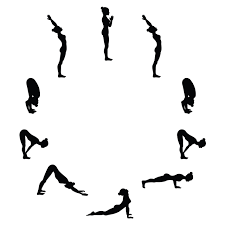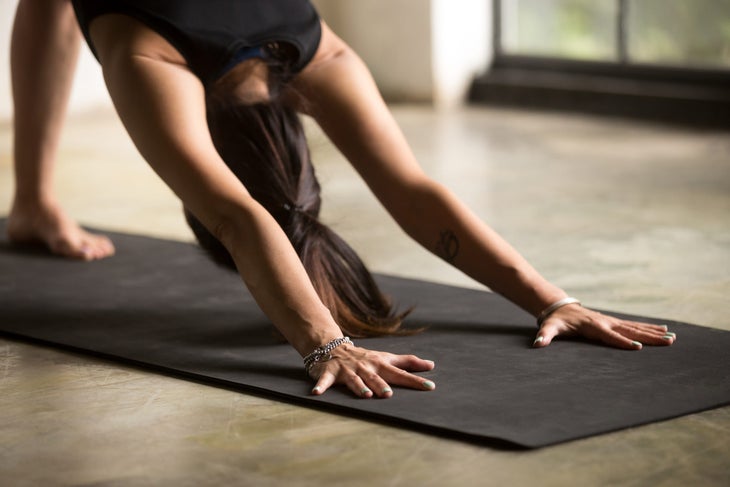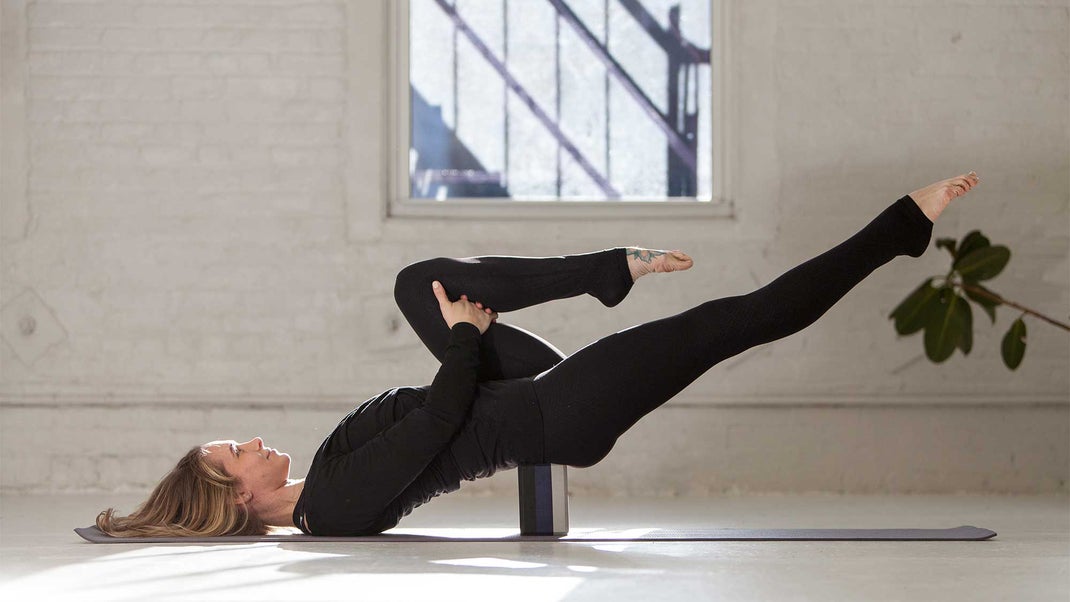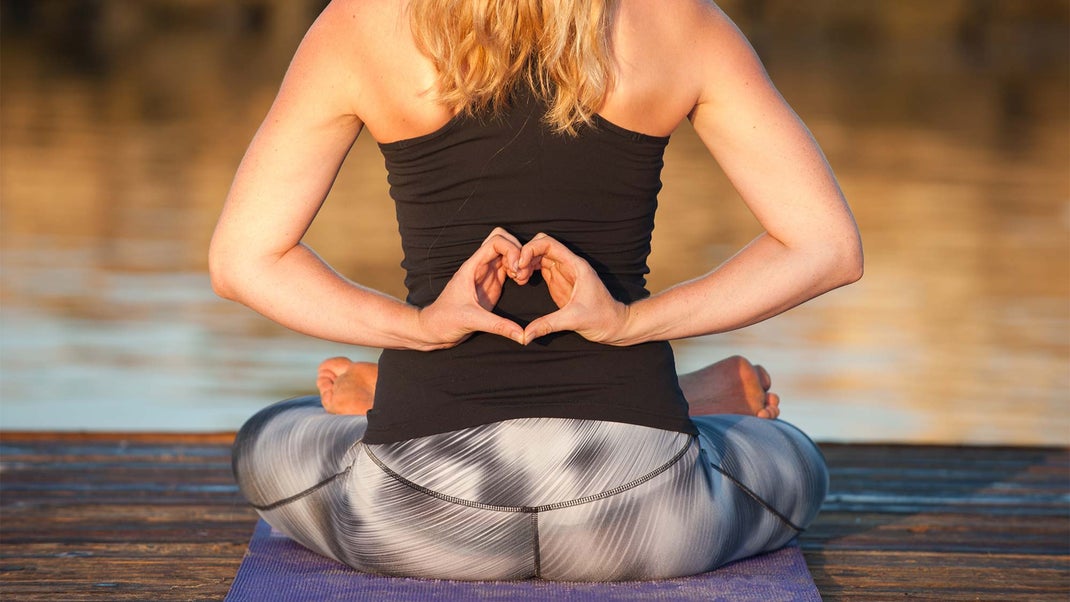Surya Namaskar A is one of the most popular asanas in yoga. It’s also a great way to exercise your body, mind, and soul! But it can be intimidating for beginners or people who are out-of-shape. This guide will show you step by step how to flow through this pose without getting too frustrated with yourself. Your practice will improve quickly with these easy steps!
It’s been said—and memed—that “Movement without awareness is exercise. Movement with awareness is yoga.”
It’s easy to aspire to the latter. (Don’t we all?) It’s not always easy to achieve it, though. Especially when you’re taking yourself through your practice without a teacher cueing a sequence. Or when you’re desperately trying to cram 10 minutes of your practice in as your weekday meeting marathon looms.
There’s actually an ancient yogic antidote specifically designed for those mornings. It’s a series of yoga postures known as Surya Namaskar A, more commonly known as Sun Salutations. This set sequence of postures dates back more than 2,500 years to a time when ancient cultures revered the sun. Salutations are believed to have been regarded as a literal salute to sunrise and were perceived to ready the body for all that would happen during daylight. (Had they only known about Zoom…)
This sequence of postures is essentially a series of prescribed motions that begins and ends with Tadasana (Mountain Pose). The poses take you through all manner of stretches, forward folds, and backbends that build heat and happen in a rhythmic cadence that’s aligned with your breath.
The start of an inhale initiates your transition from one pose to the next, followed by a lull in both the breath and body as you come into the pose, with the beginning of an exhale acting as a cue for your next transition. Breath, movement, and stillness fall into a rhythm. The trajectory of the sequence, like that of its namesake star, has a predictable arc and is cyclical, making it easy to become quietly absorbed in the looping repeated motions. A moving meditation.
You may already be vaguely or intimately familiar with Surya Namaskar A but haven’t committed the poses and their order to memory. That’s OK! We lay it all out for you here. Less thinking. More flowing.
Do you need to warm up before Surya Namaskar A?
Surya Namaskar was once considered the warm-up for the practice of yoga. Most vinyasa teachers still introduce Sun Salutations as a precursor to more challenging sequences, but only after cueing students through several stretches beforehand. If you struggle with any sort of tension, you’ll benefit from stretching before beginning the sequence—especially if you’re taking yourself through it in the morning.
Start in Balasana (Child’s Pose) for several breaths, followed by Marjaryasana and Bitilasana (Cat and Cow), and then Adho Mukha Svanasana (Downward-Facing Dog Pose). If your lower back tends to be tight, you’ll want a little additional coaxing prior to experiencing the bold backend of Urdhva Mukha Svanasana (Upward-Facing Dog Pose), so spend several breaths in Bhujangasana (Cobra Pose).
How to flow through Surya Namaskar A
Settle into your own rhythm, your own individual synchronization of movement and stillness. If you’re able to flow in a manner that lets each breath align with one movement of your body, then do so. Although it’s always an option to take a little more time and linger in any particular posture, whether you simply want to revel in that stretch a little longer or need a little more time to make your way into it. This is your practice. Own that.
And if you find yourself moving from pose to pose and lose track of whether you’re supposed to be inhaling or exhaling, rest assured, you won’t collapse if you switch it up. (A quick cheat: In yoga, as you inhale, you typically lift or expand your body in some way; as you exhale, you lower or release your body.)
This sequence of postures can be a complete practice in itself or it can prepare you for a longer asana routine. Sun Salutations are often led by teachers in sets of five, but if you’re new to the practice, start with fewer than that. Maybe even just one.
How to modify Sun Salutations for your needs
There’s already precedent for modifying the sequence given that the exact poses in Sun Salutations vary slightly among the different traditions of yoga. Don’t hesitate to modify it further to suit your personal needs.
If you tend to rush
Ever catch yourself rushing through your day or your practice and holding or quickening your breath? Instead, really intentionally allow your breath to lengthen, especially your exhales. Then allow your movement to follow the pace of your breath. Perhaps you remain longer in a pose than a single breath and let yourself settle into the stretch.
Also, transition with intention from one posture to another. Try not to rush through the in-between-poses parts.
If you have shoulder or wrist injuries or tightness
Omit Chaturanga Dandasana and transition straight from Plank to Downward-Facing Dog.
If you have tight hamstrings
Take a bend in your knees during Downward-Facing Dog and give yourself a little extra time to step forward into a lunge.
If you have tight hamstrings and/or hip flexors
You may struggle to transition from Downward-Facing Dog to Low Lunge in a single step. Instead, you can take as many steps forward as you need until your toes are in line with your fingertips. Alternately, you can first lower your opposite knee to the floor, step your other foot forward between your hands, and then straighten your back knee to come into Low Lunge.
Step-by-step Surya Namaskar A
1. Tadasana (Mountain Pose)

Stand with your feet together and your arms at your side. Distribute your weight evenly between your feet and turn your palms to face forward in Tadasana. Let yourself come to a slow, steady breath. Find your own center as you bring your palms together at the center of your chest in Anjali Mudra (also known as Salutation Seal or, quite simply, prayer hands).
2. Urdhva Hastasana (Upward Salute)

Inhale and sweep your arms straight out to the sides and up alongside your ears into Urdhva Hastasana. Your palms should face one another, and you can bring them to touch if desired. Reach your heart and arms toward the sun. If you like, you can gaze slightly upward and even take a slight backend here, lifting your chest and leaning your upper body slightly back.
3. Uttanasana (Standing Forward Bend)
Exhale and bend forward at your hips, bringing your chest to your thighs. Keep your legs strong by drawing your knees toward your hips. Let your shoulders and neck relax. Your hands can rest on your shins, ankles, or blocks in Uttanasana.
4. Ardha Uttanasana (Half Standing Forward Bend)
Inhale as you lift your chest parallel to the mat in Ardha Uttanasana. (As the name of the pose implies, you’ll literally be halfway to standing.) Draw your shoulder blades away from your ears and lengthen through your back. You can keep your palms or fingertips on the floor or bring them to your shins or blocks.
5. Plank Pose
Exhale and step your feet back into Plank Pose, which is essentially the top of a push-up. Align your body so your shoulders are directly over your wrists, your palms are flat on the mat, and your feet are hip-distance apart. (Lower your knees to the mat if you ache in your low back, shoulders, or arms.) Gaze down and slightly forward, keeping the back of your neck long. Inhale and lengthen through your back.
6. Chaturanga Dandasana (Four-Limbed Staff Pose)
Exhale and bend your elbows as you slowly lower your entire body, keeping yourself as straight as a plank of wood. Hug your elbows in toward your sides and pause when you find a right angle between your upper and lower arms. Gaze down and slightly forward. You’ll find yourself building heat as you hold this challenging posture. (If your knees were on the mat in Plank Pose, simply keep them there and lower your upper body.)
7. Urdhva Mukha Svanasana (Upward-Facing Dog Pose)
Inhale and draw your chest forward and up as you roll forward over your toes onto the tops of your feet into Urdhva Mukha Svanasana. Press the tops of your toes into the mat and keep your legs strong but relax your gluteal muscles. Pull your shoulders back and broaden through your collarbones. Gaze straight ahead or slightly up. (Instead of rolling over your toes, you can lift and place your feet, one at a time, on the mat. If this backbend feels too intense, instead come into Bhujhangasana or Cobra Pose.)
8. Adho Mukha Svanasana (Downward-Facing Dog)
Exhale as you lift your hips up and back, coming into Downward-Facing Dog. Press down through your knuckles, lengthen through your back, and release your heels toward the mat. (Don’t worry if your heels don’t touch the mat. Just let your heels feel heavy. If your hamstrings are tight, bend your knees as much as needed.) Remain here for several breaths.
9. Anjaneyasana (Low Lunge)
At the end of your exhale and just before you inhale, step your left foot forward between your hands into Anjaneyasana. Quickly bring your right foot forward next to your left. If you’re doing more than a single round of Surya Namaskar A, alternate which foot you step forward with first with each round.
10. Ardha Uttanasana (Half Standing Forward Bend)
Inhale and lift your chest halfway to standing in Ardha Uttanasana.
11. Uttanasana (Standing Forward Bend)
Exhale and bend forward at your hips into Uttanasana.
12. Urdhva Hastasana (Upward Salute)
Inhale and reach your arms out to the sides and overhead into Urdhva Hastasana once again.
13. Tadasana (Mountain Pose)
Exhale and return to Tadasana with your hands in prayer at your heart or at your sides. Continue with another Sun Salutation or remain here for a few breaths, feeling and experiencing.
Conclusion:
Your hands can rest on your shins, ankles, or blocks in Uttanasana. Your Step-by-Step Guide to Flowing Through Surya Namaskar A Your hands can rest on your shins, ankles, or blocks in Uttanasana. Your Step-by-Step Guide to Flowing Through Surya Namaskar.



